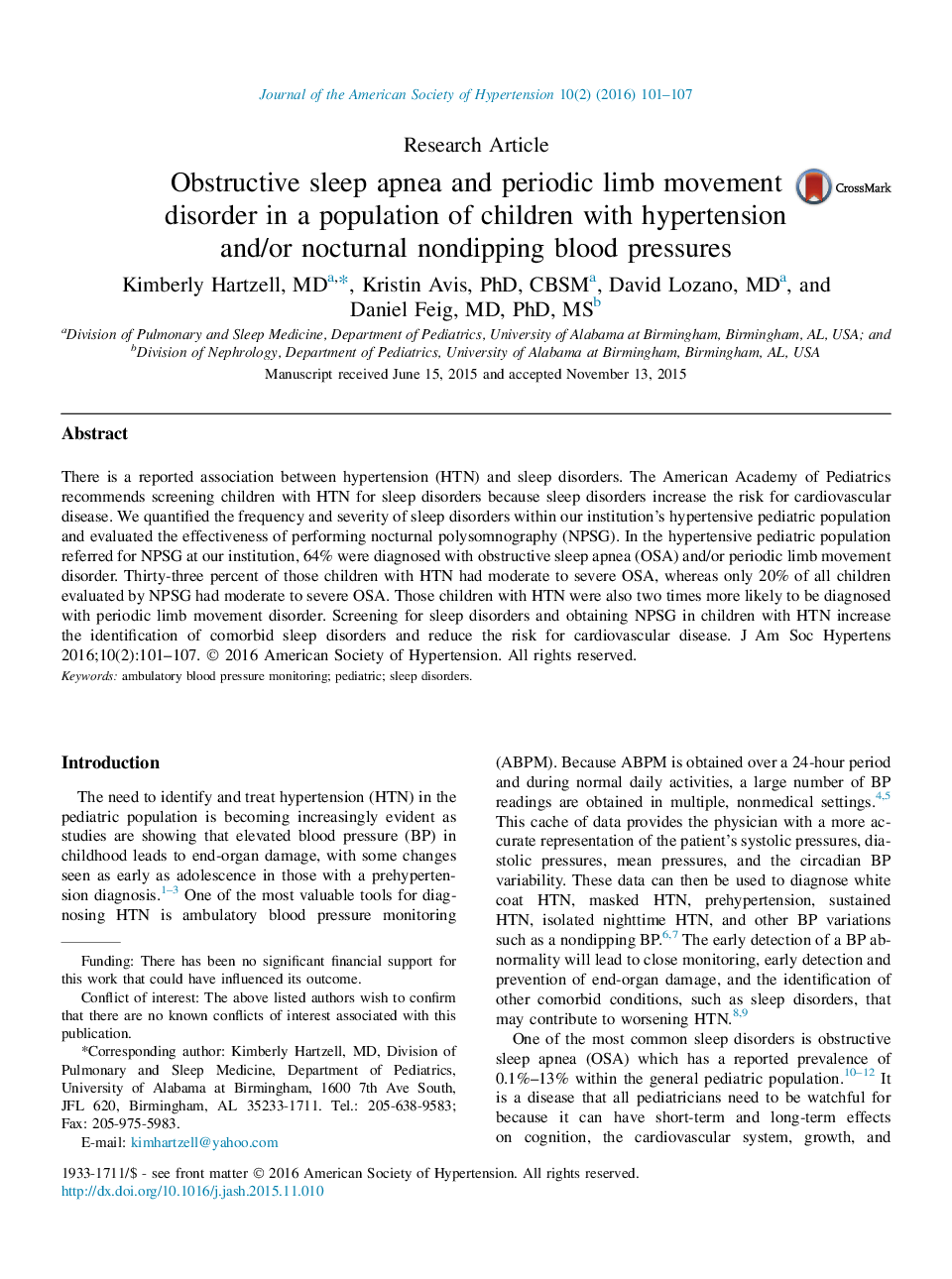| Article ID | Journal | Published Year | Pages | File Type |
|---|---|---|---|---|
| 2956892 | Journal of the American Society of Hypertension | 2016 | 7 Pages |
•Sixty-four percent of hypertensive children were diagnosed with obstructive sleep apnea and/or periodic limb movement disorder.•Fifty-four percent of hypertensive children were diagnosed with obstructive sleep apnea (apnea–hypopnea index >1).•Thirty-three percent of hypertensive children had an apnea–hypopnea index >5 versus 20% of all children who received polysomnography.•Screening hypertensive children for sleep disorders are highly recommended.
There is a reported association between hypertension (HTN) and sleep disorders. The American Academy of Pediatrics recommends screening children with HTN for sleep disorders because sleep disorders increase the risk for cardiovascular disease. We quantified the frequency and severity of sleep disorders within our institution's hypertensive pediatric population and evaluated the effectiveness of performing nocturnal polysomnography (NPSG). In the hypertensive pediatric population referred for NPSG at our institution, 64% were diagnosed with obstructive sleep apnea (OSA) and/or periodic limb movement disorder. Thirty-three percent of those children with HTN had moderate to severe OSA, whereas only 20% of all children evaluated by NPSG had moderate to severe OSA. Those children with HTN were also two times more likely to be diagnosed with periodic limb movement disorder. Screening for sleep disorders and obtaining NPSG in children with HTN increase the identification of comorbid sleep disorders and reduce the risk for cardiovascular disease.
